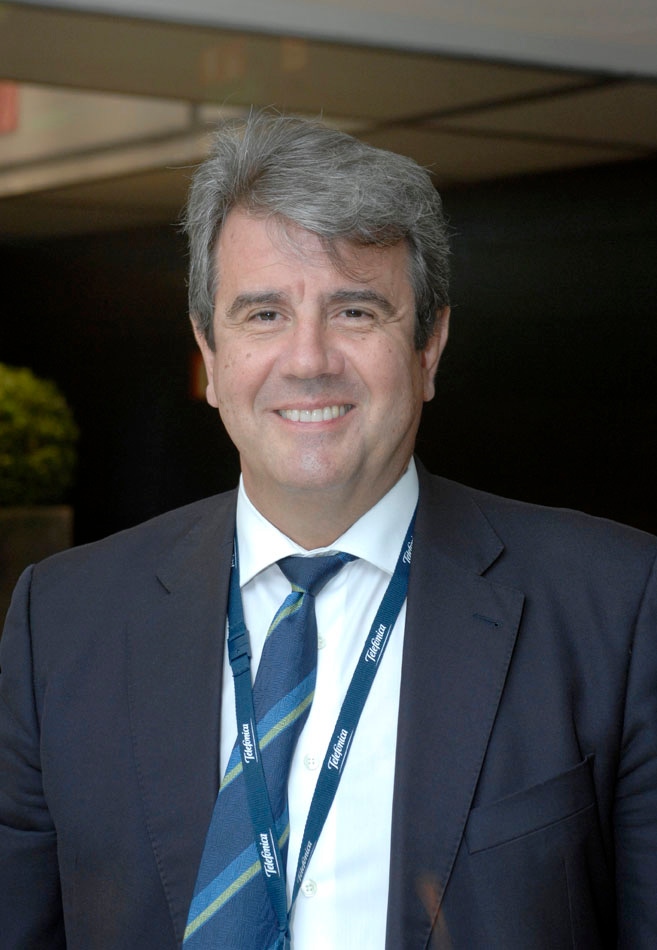Spanish multi-national operator Telefónica has unveiled a wide-reaching Network Functions Virtualization programme that it says will see it have more than 30 per cent of new infrastructure virtualized by 2016. The initiative, which will launch in June this year and has been named Unica (which is Spanish for ‘unique’), provides a framework for Telefónica’s “global, end-to-end virtualisation deployment,” the firm said.
February 24, 2014

Spanish multi-national operator Telefónica has unveiled a wide-reaching Network Functions Virtualization programme that it says will see it have more than 30 per cent of new infrastructure virtualized by 2016. The initiative, which will launch in June this year and has been named Unica (which is Spanish for ‘unique’), provides a framework for Telefónica’s “global, end-to-end virtualisation deployment,” the firm said.
Telefónica is the first of the large international operators to publicise such an initiative, and commit to any kind of timeframe for the virtualisation of a wide range of different network elements.
But the firm has not offered any detailed insights at this stage into how and when it plans to decommission legacy systems. “Of course we need to maintain our legacy,” said Global CTO Enrique Blanco. “We have a big legacy but it is going to change and it will be exciting because it will happen in the next two or three years.”
The IP Multimedia Subsystem (IMS), Evolved Packet Core (EPC) and Domain Name System (DNS) are among the systems being virtualised in the first phase of the project, which closes at the end of this year, according to a presentation seen by Telecoms.com last week.
Meanwhile, following a trial currently running at the firm’s Brazilian operation, Telefónica is also planning to virtualise equipment that it has deployed at customer premises. All software and control functions for Telefónica modems will be moved into the Telefónica cloud, using technology developed by the operator in conjunction with “one of the big Japanese vendors,” Blanco said.
“This will be deployed in a massive way in the last quarter of this year,” he said.
In 2015 – 2016 one of the most challenging projects will be the virtualisation of the Broadband Remote Access Server, Blanco said. Virtualisation of the RAN is on the agenda but Telefónica has yet to specify a timeline for this part of the process, he said.
Telefónica’S Project Unica Nfv Timeline (Source: Telefónica)
Blanco said that the firm’s technical management no longer “see a clear differentiation between network and IT” and that the network unit had been inspired by the virtualisation work of the IT team led by CIO Phil Jordan which will have virtualised 40 per cent of its servers by the end of 2014.
“In the next three years when you walk round our data centres you won’t be able to distinguish if the server that you are looking at is providing a service to a big corporate customer, a cloud service for our own people or if it’s running the HLR, the IMS or the EPC. This is really changing the paradigm,” Blanco said.
Telefónica has been running proof of concept trials with Huawei, Alcatel-Lucent and NEC, with Broadsoft, Nokia Solutions and Networks, HP and Ericsson also involved in the Unica programme.
But not all vendors are happy about their customers move to a virtualized environment, said Cayetano Carbajo Martin, planning and technology director for Transport, Core, Platforms and Mobile Devices at Telefónica. “We are doing this to break vendor lock-in,” Martin said. “The traditional [telecom] vendors don’t like this. But if you force them to compete, if you define your reference architecture and say that, in Telefónica we will not have an network functions that do not conform to this reference architeture, sooner or later they will come to you.”
To take one example, the move to virtualisation will allow Telefónica to comission, implement and go live with a new IMS in four days, rather than the four months it currently takes, said Martin. The reverse is also true; systems can be switched off just as quickly as they can be switched on and Martin said that competition between vendors would intensify as a results.
Commenting on the announcement, Informa Telecoms & Media principal analyst Dimitris Mavrakis said: “Although Telefonica’s announcement is a major commitment to NFV, it remains to be seen whether existing equipment will be replaced with virtualised or if only new – or depreciated – network elements are relevant to this announcement. Telefonica’s announcement illustrates that telecom operators cannot wait for the outcomes of the NFV group, much less for standardisation of virtualised network technologies.”
About the Author(s)
You May Also Like








.png?width=300&auto=webp&quality=80&disable=upscale)


_1.jpg?width=300&auto=webp&quality=80&disable=upscale)


.png?width=800&auto=webp&quality=80&disable=upscale)